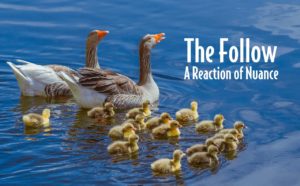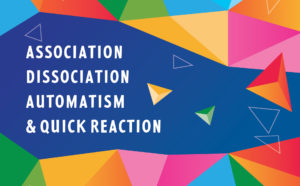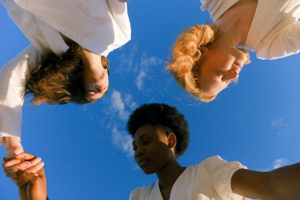Posts Tagged ‘Dalcroze Teaching Strategies’
The Spirit of Play Brings Joy
One summer afternoon, I sat on my porch watching some neighborhood children playing. Their mission was to find roly-polies under a rock, and they had to find a way to move the rock to do so. One pretended he was Superman and tried to lift it. Another tried to push it. The third kicked. Each…
Read MoreThe Follow: A Reaction of Nuance
The follow is a uniquely American Dalcroze teaching strategy and combines elements of association, dissociation, improvisation, and group exercise. Here, Leslie Upchurch describes the elements that comprise a follow activity, as well as several examples of how to use the follow when teaching students of various ages. My first Dalcroze eurhythmics experience was as a…
Read MoreImprovisation in the Dalcroze Classroom
Along with eurhythmics and solfège, improvisation is one part of Jaques-Dalcroze’s tripartite description of his system of music education. Often associated with on-the-spot instrumental creations, Michael Joviala illuminates how this subject reaches beyond the instrument, the exercise, and the notes. In this article, you will find diverse manifestations of improvisation within a teaching environment, as…
Read MoreAssociation, Dissociation, Automatism, and Quick Reaction
“Clap the beat.” “When I say change, change between your hands and feet.” It’s not often that we encounter a eurhythmics lesson without hearing one of these quintessential phrases. They are an integral part of a eurhythmics class and an indicator that students are experiencing one of several frequently used pedagogical strategies: association, dissociation, or…
Read MorePlastique Animée: The Dalcrozian Analytical Technique
“The acquisition of all the plastic, dynamic, and agogic qualities indispensable to rhythmist or dancer, actor, or mime, will make him only an adapter, a transposer, an automaton, unless these technical qualities are controlled by a wealth of fancy, a supple, elastic temperament, a generous spontaneity of feeling, and an artistic, responsive nature. All plastique…
Read MoreGroup Activities in the Dalcroze Lesson
Perhaps the most enduring negative side effects of the recent pandemic were caused by the social isolation. Families were segregated during illnesses, schoolchildren were separated from their peers, and communities suffered permanent losses of their members. I found myself missing even the most basic, mundane tasks like grocery shopping, taking my children to local playgrounds,…
Read MoreTime, Space, & Energy
By Mary Dobrea-Grindahl, Diplôme Supérieur and Lauren Hodgson, Dalcroze License The relationships of time, space, and energy are considered a hallmark of the Dalcroze practice. These three elements are essential to our work in bringing music to life, developing body awareness and control, and understanding the physics and energy of harmony, melody, nuance, and rhythm.…
Read MoreSpatial Orientation and Awareness
For many years of my own eurhythmics practice, I focused mostly on trying to coordinate my arms and legs through ever more complicated rhythms. Only recently have I become entranced by one of the very things that makes movement possible—space. It seems obvious: How can you move if you are not aware of the space…
Read MoreCanons in the Dalcroze Classroom
When I was 8 or 9 years old, my mother had me listen to Franck’s Violin and Piano Sonata – she had just bought the LP and she thought I’d be interested in the 4th movement. We were the sort of family that was always singing rounds, but this was the first time I’d heard a…
Read More







